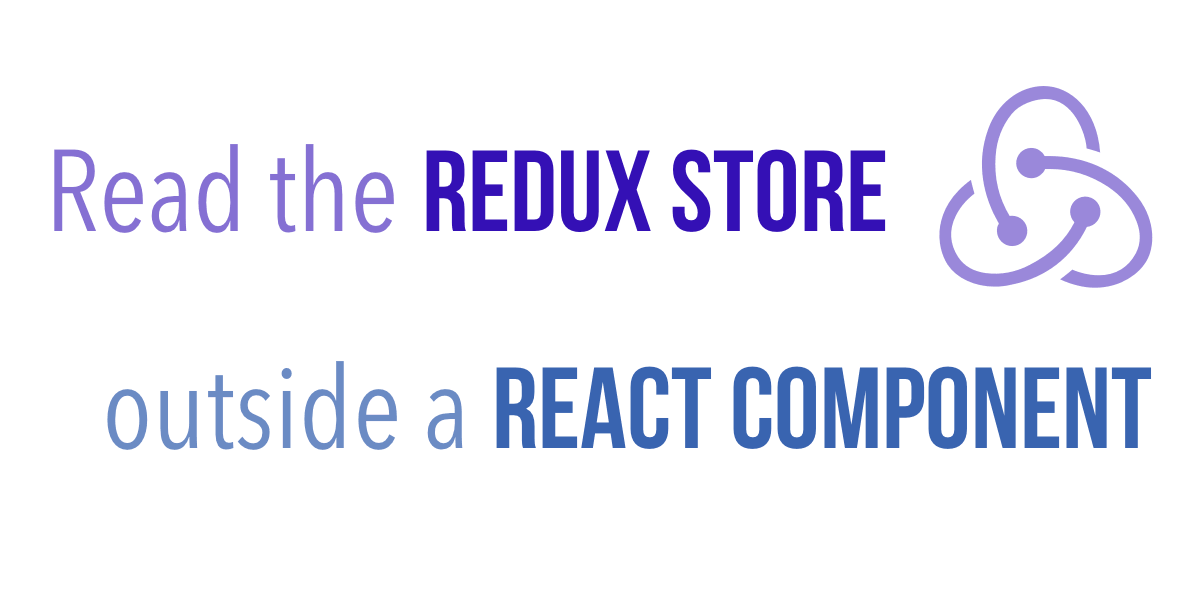Accessing Redux Store Outside React Components: Best Practices
Learn the best practices for accessing your Redux store data outside of React components for tasks like logging or initialization.
Learn the best practices for accessing your Redux store data outside of React components for tasks like logging or initialization.
This article explains how to access the Redux store outside of React components, a technique that can be useful in certain situations but should be used with caution. It covers exporting the store, importing and using it with examples, and highlights important considerations such as the decoupling from React-Redux, potential alternative solutions, and testing implications.
While Redux is commonly used within React components, there are situations where you might need to access the store outside of a component. Here's how to do it:
1. Export the Store:
When setting up your Redux store, ensure you export it from the file where it's created. This makes it accessible from other parts of your application.
// store.js
import { createStore } from 'redux';
import rootReducer from './reducers';
const store = createStore(rootReducer);
export default store;2. Import and Use the Store:
Now you can import the store into any file where you need to access it. You can then use the store's methods like getState() to read data and dispatch() to update the store.
// utils.js
import store from './store';
function logCurrentState() {
const state = store.getState();
console.log('Current Redux state:', state);
}
export { logCurrentState };Important Considerations:
redux-thunk for asynchronous operations might be more suitable.Example:
Let's say you have a utility function that needs to log the current state:
// store.js
// ... (store creation as shown above)
// utils.js
import store from './store';
function logCurrentState() {
const state = store.getState();
console.log('Current Redux state:', state);
}
export { logCurrentState };
// App.js
import { logCurrentState } from './utils';
// ... other code
logCurrentState(); // Logs the current state from the storeRemember: Direct store access can make your code harder to maintain and test. Use it sparingly and consider alternative solutions when possible.
This JavaScript code demonstrates a basic setup of a Redux store outside of a React component context. It defines a store with a counter, provides utility functions to interact with the store (get state, dispatch actions), and showcases how to use these functions to log and update the state. Additionally, it illustrates subscribing to store changes for observing updates.
// --- store.js ---
import { createStore } from 'redux';
// Sample reducer
const counterReducer = (state = { count: 0 }, action) => {
switch (action.type) {
case 'INCREMENT':
return { count: state.count + 1 };
default:
return state;
}
};
const store = createStore(counterReducer);
export default store;
// --- utils.js ---
import store from './store.js';
export const logCurrentState = () => {
const state = store.getState();
console.log('Current Redux state:', state);
};
export const incrementCounter = () => {
store.dispatch({ type: 'INCREMENT' });
};
// --- App.js --- (Example usage)
import store from './store.js';
import { logCurrentState, incrementCounter } from './utils.js';
// Log initial state
logCurrentState(); // Output: Current Redux state: { count: 0 }
// Dispatch an action from outside a component
incrementCounter();
// Log updated state
logCurrentState(); // Output: Current Redux state: { count: 1 }
// Subscribe to store changes (for demonstration)
const unsubscribe = store.subscribe(() => {
console.log('Store updated!', store.getState());
});
// Dispatch another action
incrementCounter(); // Console will show the updated state
// Stop listening to changes
unsubscribe(); Explanation:
store.js: We create a simple Redux store with a counter reducer. The store is exported to be used in other files.
utils.js: This file demonstrates accessing the store outside React components.
logCurrentState() gets the current state using store.getState() and logs it.incrementCounter() dispatches an INCREMENT action to update the store.App.js: This simulates how you might use the functions from utils.js.
logCurrentState() to show the initial state.incrementCounter() to update the store.logCurrentState() again to show the updated state.store.subscribe() for demonstration purposes.Key Points:
getState(), dispatch()).When to Consider Accessing the Store Directly:
Potential Drawbacks:
Best Practices:
Alternatives to Direct Store Access:
redux-thunk or redux-saga provide a structured way to handle side effects, asynchronous operations, and complex logic related to state updates.In summary, while accessing the Redux store outside of React components is possible, it should be done judiciously. Carefully weigh the benefits against the potential drawbacks and explore alternative solutions whenever appropriate.
This article explains how to access the Redux store outside of React components, which can be useful in specific situations.
Here's the gist:
getState() and dispatch().However, there are important considerations:
redux-thunk instead.In short: While possible, directly accessing the Redux store outside React components should be done cautiously. Explore alternative solutions first and be mindful of potential drawbacks.
Direct access to the Redux store outside of React components is possible and occasionally necessary, but it should be approached with caution. While it offers flexibility for tasks like initialization, logging, or integration with external libraries, it can lead to tight coupling, reduced reusability, and debugging challenges. Consider alternatives like passing data as props, using middleware, or employing React's Context API when appropriate. If direct access is unavoidable, encapsulate the logic, use selectors for state extraction, and thoroughly document the code. By carefully weighing the benefits and drawbacks, developers can make informed decisions about accessing the Redux store outside of React components and maintain a clean, maintainable codebase.
 Access the Redux Store Outside a React Component | Need to access your Redux store outside a React component?
Access the Redux Store Outside a React Component | Need to access your Redux store outside a React component? How to access Redux store outside React Component? : r/reactjs | Posted by u/[Deleted Account] - No votes and 1 comment
How to access Redux store outside React Component? : r/reactjs | Posted by u/[Deleted Account] - No votes and 1 comment Access the Redux Store Outside a React Component : r/reactjs | Posted by u/dceddia - 35 votes and 12 comments
Access the Redux Store Outside a React Component : r/reactjs | Posted by u/dceddia - 35 votes and 12 comments